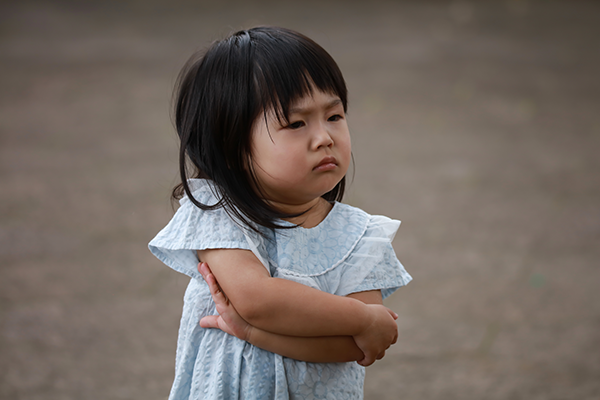DON’T TAKE IT PERSONALLY
Dealing with anger is a learned response that each child must address in his development. Parents are often used by children as a tool for change. Taking it personally may escalate into anger toward your child.
CHANGE THE SCENERY
A child’s brain is constantly processing the information in her environment. Changing the environment will give the brain something new to process and serve as a distraction. The next time your child is overwhelmed with anger, pick up your child and take her into another room in your home. If not at home, remove her from the immediate environment, even if it means taking her outside. If your child suffers from repeated meltdowns, it may be helpful to go to the same spot in the home each time the scenery needs to be changed. You may designate a rocking chair or other piece of furniture to sit in while in the process of calming down.
IDENTIFY FEELINGS
Children will often become angry because they lack a completed “feeling vocabulary.” Help them identify their feeling (mad, sad, frustrated, upset, etc.) by giving their feelings a name. To deal with the current anger, let them know how you became aware they are angry. For example, you may say, “I can tell you are feeling angry right now because your face is red, you are crying, and you just stomped your feet. What happened right before you started feeling angry?” This allows children to make a connection between circumstances and their response.
VALIDATE THE FEELING
Let your child know you understand by sympathizing with the circumstances that brought him to anger. For example, you might say, “I know it is very frustrating when you want something and Mama says you may not have it right now. It’s hard to keep from getting really angry when Mama says, ‘No,’ but you are going to be okay.
You may not have ________ right now, but there will be other times when you may have that. For now, let’s think about how you could calm down and not be so angry.” Let him know you have his best interests at heart, especially when safety is a concern.
PROVIDE A DISTRACTION
Sometimes angry children can calm down when they are given a choice of an alternate activity. For example, “You may not play a video game right now, but you may read a book or play with this other toy. What do you choose to do?”
TEACH RELAXATION
If the above does not calm your child, she may need you to provide some active instruction. Remind her she can calm down by taking some deep breaths. Say, “You are very upset. Let’s takes some deep breaths to calm down. Let’s take three deep breaths together.” Then literally count as you each take 3 deep breaths. Several rounds of stretching up high and then reaching down to the toes may also prove helpful.
USE A TRANSITIONAL OBJECT FOR YOUNG CHILDREN
Young children may respond positively to a visual aid. A favorite designated musical doll may assist them. After giving the doll a name, say, “Listen to [the doll] and the pretty music.”
TALK THROUGH SOLVING THE PROBLEM
Help your child think of several ways to deal with the initial circumstance other than anger.
For example, if he became angry after fighting with a sibling, ask him,“What could you do differently next time?” Teach him to walk away from the conflict. Teach him negotiation skills. Teach him to ask an adult to intervene when appropriate.
CYCLE THROUGH THE PROCESS MULTIPLE TIMES
Sometimes merely discussing the original distressing situation will prompt additional tantrums, expression of angry feelings or tears. Remember, learning takes time and practice!
KNOW YOUR CHILD’S TRIGGERS
Feeling tired, being hungry, or not following the usual routine can all be triggers for anger. Address the trigger and calm the child! Prevent the trigger and prevent the tantrum!
CONTROL YOUR OWN ANGER
If you express your anger in appropriate ways and are then able to move on from that emotion, your child will likely follow your example.







